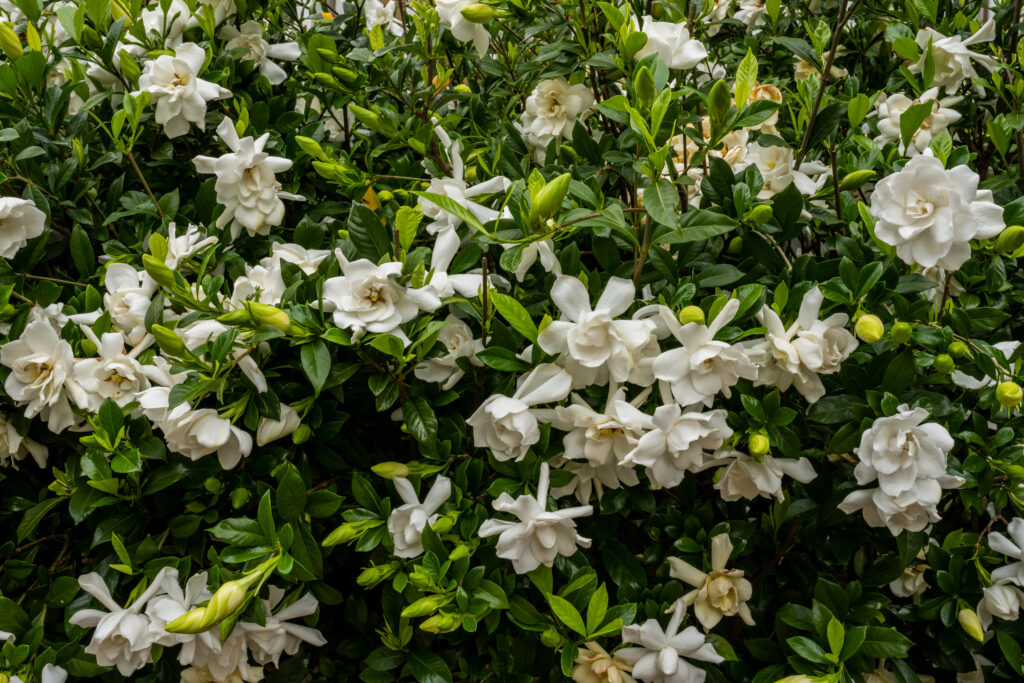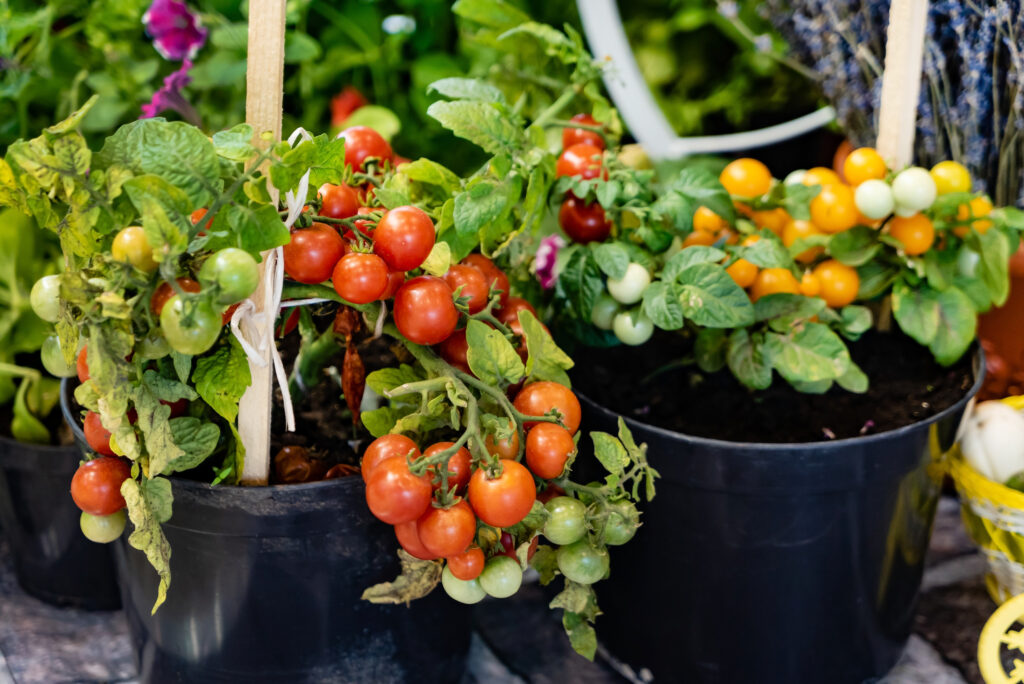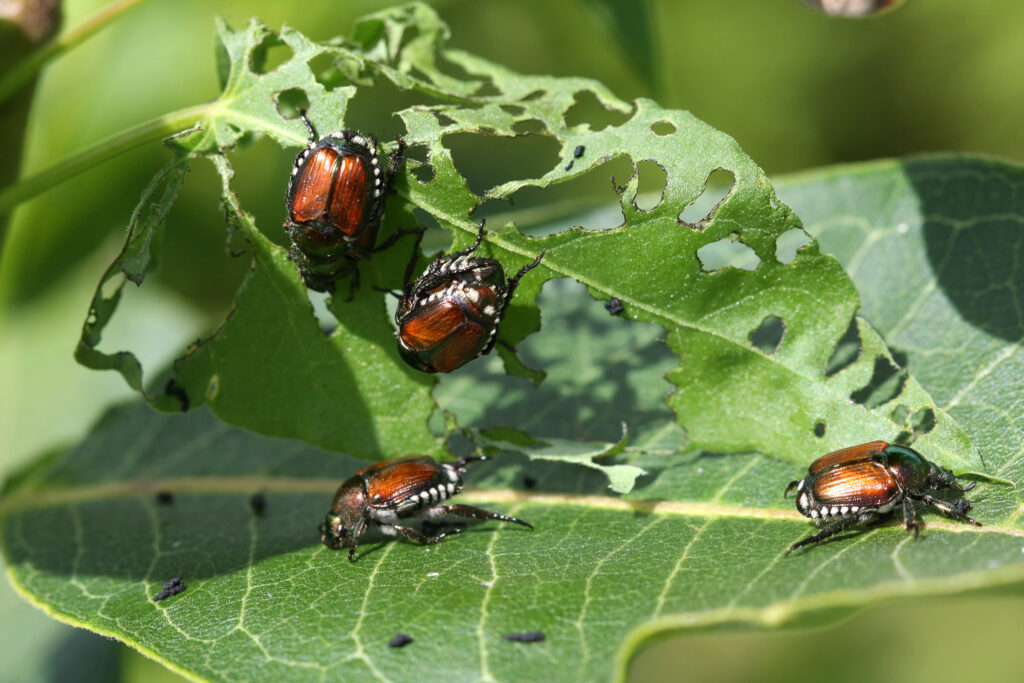BY CHERYL CAPALDO TRAYLOR
This is one of a series of online articles we offer on maintaining and improving your garden throughout the year.
Hopefully you and your plants are surviving the high temperatures and humidity as we enter into one of the year’s hottest months—July. There’s still lots to do in the garden and it can be fun! Plan gardening tasks for early morning and evening when the sun is not so intense, and stay hydrated. Heatstroke is serious. Take care of your plants and yourself!
Planting
- Wait until fall to plant, or transplant, almost everything.
- You can still add heat-loving annuals to fill bare spots in the garden including salvias, gomphrena, coleus, and tropicals.

Pruning
- Shape conifers and narrow-leaf evergreens by trimming new growth. You can prune needle evergreens and foundation shrubs to control size. Don’t remove more than one-third of shrub’s growth.
- Prune gardenias immediately after blooming.
- After July 4th, it’s getting late to prune azaleas without risking next year’s blooms. So prune now, if needed.
- Encore azaleas require very little pruning.
- Prune lacecap and mophead hydrangeas immediately after blooming.
- Dead wood can be removed anytime.

Perennial Care
- Deadhead perennials to promote new growth, including coneflowers, phlox, Shasta daisies, and black-eyed Susans.
- Pinch back chrysanthemums until mid-July.
- Stake any floppy plants that weren’t stabilized earlier in the season. Use materials that blend in and garden twine.
- Many perennials can be cut down after blooming. New growth will emerge. Tradescantia (spiderwort), Acanthus (bear’s breeches), and Nepeta (catmint) do well with this treatment.
- Keep deadheading and fertilizing roses to prolong bloom.
- Water consistently during dry periods, especially new plantings that aren’t established. It is best to water in the morning, due to the likelihood of evaporation in the heat of the afternoon.
- If you use irrigation, check to be sure it’s working well and watering only where it is needed.
- Add mulch to keep soil cool and moist.

Containers
- Continue grooming containers so they stay tidy. Replace under-performers. Don’t be afraid to try something different. Containers are excellent for experimentation.
- Containers need water more often than in-ground plants. Fertilize every other week with a fertilizer made for containers.

Disease, Weeds, and Pests
- Look for disease and pest issues before they intensify. Prevention is key, as are good cultural practices and choosing the right plants for your garden. (Good cultural practices include weeding, removing dead or dying plants, watering efficiently and keeping the soil healthy by feeding it with compost or other amendments.)
- Control Japanese beetles by handpicking or knocking them into soapy water. Roses suffer the most damage and can be covered with netting. Traps attract beetles rather than repelling, so avoid using them.
- If you are using any fungicide, herbicide, or pesticide (including organic or homemade), always follow the label instructions and use caution.
- Stay on top of weeds before they set seed. Many weeds like Microstegium (Japanese stilt grass) set seed in late summer, so don’t procrastinate.
- Keep an eye out for Iris Leaf Spot—small tan spots on foliage that eventually cause the whole leaf to look dry and brown. Good garden hygiene is imperative, so clean up old leaf debris.
Above all, enjoy your garden!
Cheryl Capaldo Traylor is a professional gardener and owner at Six Seasons Garden Consulting. She creates and tends beautiful gardens in the Raleigh area. Through writing she explores her lifelong love of nature and plants. https://sixseasonsgarden.com


